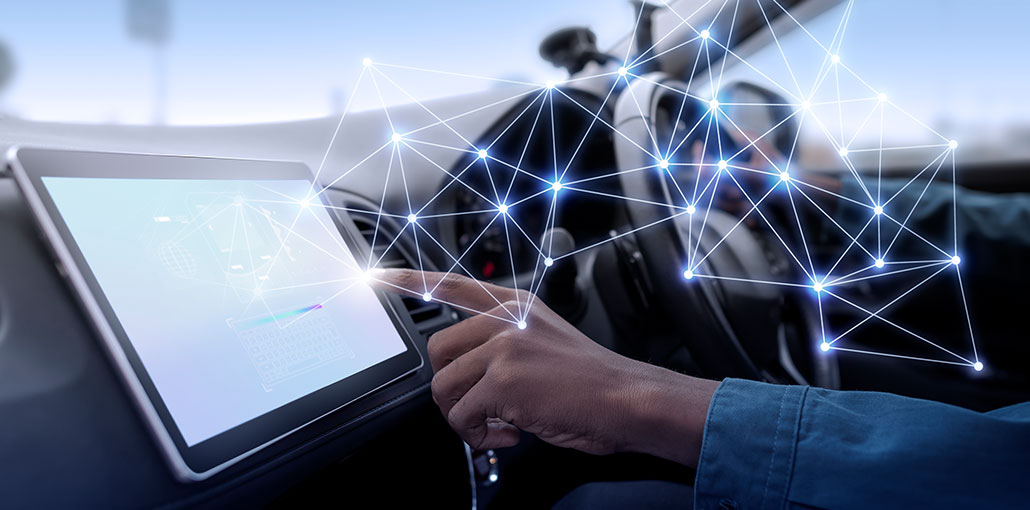The automotive industry is a dynamic one and car manufacturers need to keep up with technology trends to succeed. Technology has altered the industry at a tremendous pace, and it continues to change. Everything from fuel efficiency to entertainment in vehicles is thanks to developments in technology. Below are some of the top technology trends in the industry:
Add-ons Like ODB2 Gauge Display
The ODB2 gauge display is an add-on that can be used in place of the standard instrument cluster. It provides the driver with a wealth of information about their vehicles, such as fuel consumption, engine temperature, and RPM. The main benefit of this technology is its convenience: drivers can have access to all kinds of useful data without having to reach for the center console or any other location in order to find it.
Internet of Things (IoT)
With the arrival of IoT, we can now connect and control almost anything from anywhere. Many cars come with built-in connectivity to the Internet so you can use it to listen to music or get directions. The “Internet of Things” (IoT) is a growing trend that allows devices to connect with one another via an IP network. This will allow for remote access, control, and monitoring of our vehicles from anywhere in the world. This technology can also be used as part of smart cities or smart homes. With the internet of things, you can even keep an eye on your car while you’re out of town.
Sensors
Sensors are used to measure things like temperature, pressure, light, humidity, etc. Sensors can be used for a variety of applications. In the automotive industry, sensors are used to measure the temperatures and pressures of fuel and air in engines. They can also be used to measure tire pressure or oil pumps for cars that have them installed. These sensors help drivers learn if their tires are low so they can avoid things like a blowout while they are driving.
Also read: Top 5 Technology That Will Change Human’s Perception
Connected Vehicles
Connectivity is a key aspect of the automotive industry, as it allows vehicles to communicate with each other and infrastructure. Connected vehicles are able to provide real-time information about their position and speed, as well as accident warnings or vehicle malfunctions. This is important not only for safety reasons but also because it can help reduce congestion on the road by reducing unnecessary braking and speeding up traffic flow.
Connected cars include hybrid and electric vehicles that also have the potential to help improve fuel efficiency. They provide real-time information about how much battery power remains in your car’s battery so that you can plan for where you will charge next. Your car might even guide you through charging stations along your route if there isn’t one at your destination.
The next level of connectivity is vehicle-to-vehicle (V2V) communication, where vehicles communicate with one another directly. This could allow for an increase in safety on roads by helping drivers prevent collisions by alerting them when another car is about to hit theirs. It also means that drivers won’t have any excuse for texting while driving because they’ll always know what’s around them thanks to V2V technology.
Engine Efficiency Technology
Engine efficiency technology is one of the most important technologies in the automotive industry. It helps save money and resources while improving performance, and it helps both consumers and manufacturers alike.
Engine efficiency technology helps the environment by reducing emissions and other harmful pollutants. Cars are responsible for around 30% of global carbon dioxide emissions, so improvements to engine efficiency can have a huge impact on our planet’s health. Engine efficiency technology also reduces energy consumption and lowers costs for consumers, who should benefit from lower fuel prices as a result of efficiencies made possible by this type of technology development.
Automated Car Features
This technology is still in its early stages, but it’s not far off. In fact, several manufacturers have announced plans to release automated cars within the next 5-10 years. So, what can you expect from this new wave of vehicles? The most advanced driverless car technologies will allow you to do things like taking your hands off the wheel and feet off the pedals while driving on highways or freeways. These cars will also be able to park themselves, though there may be some restrictions on where they can go. Auto manufacturers are working hard to make these automated features more affordable so that everyone can access them.










Leave a comment